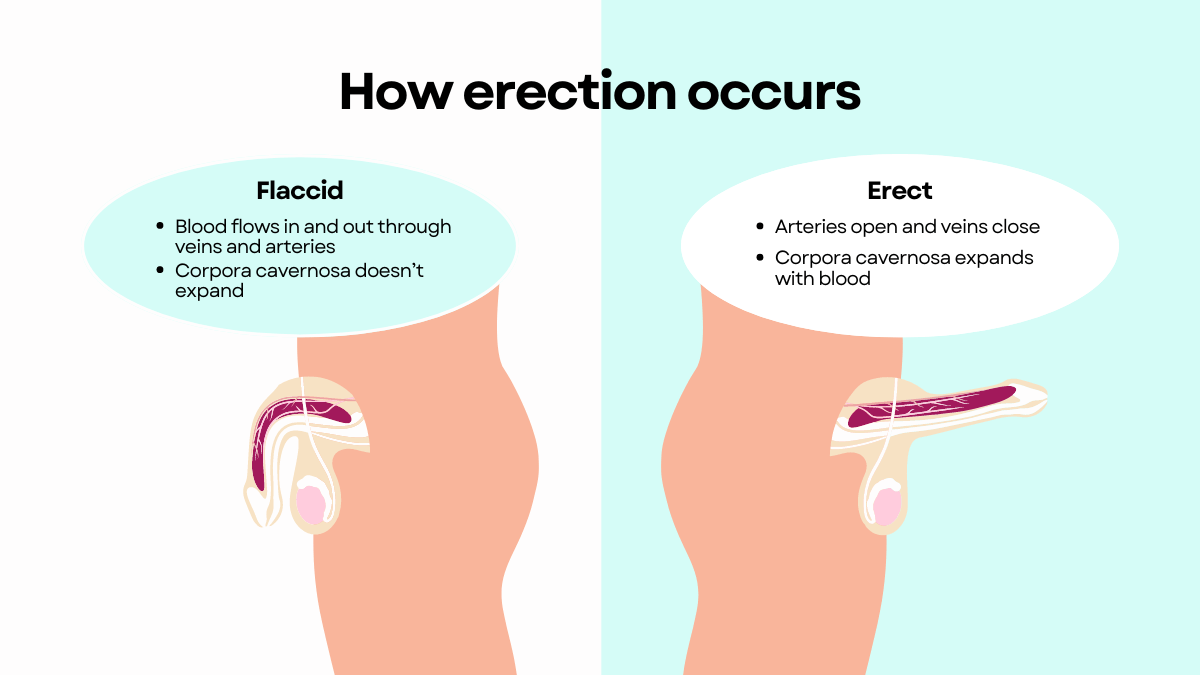How Common Is Erectile Dysfunction?
Table of Contents
Erectile dysfunction (ED) is a common condition affecting approximately 50-55% of men between the ages of 40 and 70, according to the British Association of Urological Surgeons (BAUS). The likelihood of experiencing ED increases with age, but it can also affect younger men due to various factors such as lifestyle, psychological health, and underlying medical conditions. Despite its commonality, many men delay seeking treatment, highlighting the need for greater awareness and open conversations about ED.
Recent studies reveal that ED is not just an issue for older men; younger men are also increasingly affected, often due to stress, anxiety, and other mental health issues. Lifestyle factors such as smoking, excessive alcohol consumption, and a sedentary lifestyle further exacerbate the risk. This widespread prevalence underscores the importance of addressing both the physical and psychological components of ED to ensure comprehensive treatment and support for those affected.
What typically causes ED?
Erectile dysfunction often serves as an early indicator of underlying health issues such as high blood pressure, high cholesterol, and diabetes, with potential links to increased risks of cardiovascular disease (+43%), dementia (+68%), and premature mortality. Despite these risks, less than half of affected men seek medical advice or treatment, which can lead to compounded physical and psychological challenges.
Approximately 90% of men experiencing ED have at least one identifiable physical cause contributing to their condition. The primary underlying factors include:
- Cardiovascular disease (40%): Impacts blood flow to the penis.
- Diabetes in (33%): Leads to nerve and blood vessel damage crucial for erections.
- Hormonal imbalances (11%): Such as high prolactin or low testosterone levels.
- Neurological disorders (10%): Affecting nerve signals required for achieving and maintaining erections.
- Pelvic surgery or trauma (3-5%): Can disrupt the anatomical structures supporting erectile function.
- Anatomical abnormalities (1-3%): Such as Peyronie’s disease or inflammation, which can physically interfere with erections.
Psychological factors, including performance anxiety, contribute to ED in many cases. However, pure psychological causes without underlying physical issues are relatively rare, affecting only about 10% of men with ED. Regardless of the perceived cause, men experiencing ED should consult our pharmacist to explore potential underlying health concerns and appropriate treatment options.

What factor does age play in ED?
Age significantly influences the likelihood of experiencing erectile dysfunction (ED). The incidence of ED rises steadily with age, becoming more prevalent in older men:
- Approximately 2% of men report first experiencing ED before age 40.
- About 4% first experience ED between ages 40 to 49.
- The prevalence increases to 26% among men aged 50 to 59.
- By ages 60 to 69, approximately 40% of men have encountered ED for the first time.
While ED predominantly affects older men due to increased incidence of underlying health conditions like cardiovascular disease and diabetes, it is important to note that younger men can also be affected. Psychological factors such as performance anxiety and lifestyle choices like excessive pornography consumption can hinder younger men’s ability to achieve and maintain erections. Regardless of age, seeking medical advice can help address both physical and psychological factors contributing to ED.
Ways to prevent erectile dysfunction
To reduce the risk of developing erectile dysfunction (ED), consider the following preventive measures:
- Maintain a healthy weight through a balanced diet and regular exercise.
- Manage underlying health conditions like diabetes, hypertension, and heart disease.
- Avoid excessive alcohol consumption.
- Quit smoking and avoid recreational drug use.
- Manage stress through relaxation techniques or therapy.
- Communicate openly with your partner about sexual concerns and expectations.
For more detailed preventive measures, refer to the National Institute of Diabetes and Digestive and Kidney Diseases (NIDDK).
Different medication forms for erectile dysfunction
When it comes to treating erectile dysfunction (ED), medications come in various forms, each with its advantages depending on individual needs and preferences:
- Oral medications:
- Phosphodiesterase-5 (PDE5) Inhibitors (e.g., sildenafil, tadalafil, vardenafil): These are taken orally and work by increasing blood flow to the penis, helping to achieve and maintain erections. They are typically taken on-demand before sexual activity and are effective for many men with ED.
- Topical medications:
- Alprostadil Cream or Gel: Applied directly to the penis, alprostadil cream or gel works by widening blood vessels to improve blood flow, leading to an erection. It can be an alternative for men who cannot use or do not respond well to oral medications.
- Injectable medications:
- Intracavernosal Injections (e.g., alprostadil): Administered via a small needle into the side of the penis, intracavernosal injections quickly induce an erection by relaxing smooth muscle and dilating blood vessels. This method is often effective for men who do not respond to oral medications.
Choosing the right medication form depends on factors such as individual health conditions, preferences, effectiveness, and ease of use. At The Family Chemist, our pharmacists can provide personalised guidance to help you select the most suitable treatment for your ED.

